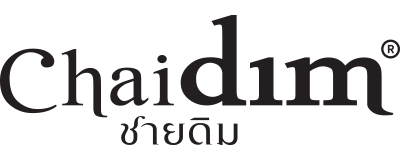
Tea 2.0: A Statistical Dive into the Resurgence of Green, Oolong, and Herbal Elixirs
Tea is one of the most popular beverages in the world, with a long history and a rich culture. However, in recent years, the tea market has undergone significant changes, with new brands and products emerging to cater to the changing tastes and preferences of consumers. In this article, we will explore the rise of specialty teas, such as green tea, oolong, black tea, and herbal blends, and examine their market size, growth, and consumer behavior in Asia.
What are specialty teas?
Specialty teas are teas that offer unique and distinctive flavor profiles, health benefits, and quality standards. They are often made from high-quality tea leaves that are carefully selected, processed, and blended to create different varieties and styles. Specialty teas can be classified into two types: tea made from the Camellia sinensis plant, such as green, white, black, and oolong teas, and herbal teas made from other plants, such as fruits, flowers, spices, or herbs¹.
Tea from the Camellia sinensis plant contains antioxidants that can protect the body from free radicals, inflammation, and diseases like heart disease and cancer. Different varieties of this tea have different effects on metabolism, weight loss, and skin health. Herbal teas have lower concentrations of antioxidants than tea from the Camellia sinensis plant, but they have various medicinal effects depending on the plant used. Some examples of herbal teas are ginger, mint, chamomile, and rooibos¹.
How big is the specialty tea market in Asia?

According to a report by Mordor Intelligence, the Asia-Pacific tea market size was valued at USD 17.26 billion in 2023 and is expected to grow to USD 22.69 billion by 2028, at a compound annual growth rate (CAGR) of 3.4%. The growth of the tea market is primarily driven by the increasing health consciousness among consumers and the growing popularity of specialty teas².
The specialty tea market is a subset of the Asia-Pacific tea market and is estimated to account for about 20% of the total market share. The specialty tea market is set to grow by USD 1.10 billion from 2021 to 2026, and the market's growth momentum will accelerate at a CAGR of 6.04%³. The specialty tea market is segmented by form, product type, distribution channel, and geography. The leaf tea segment is expected to dominate the market, followed by the CTC (crush, tear, curl) tea segment. The green tea segment is projected to grow at the highest CAGR during the forecast period, followed by the herbal tea segment. The supermarkets/hypermarkets segment is expected to be the largest distribution channel, followed by the specialty retailers segment. The China region is expected to be the largest market for specialty teas, followed by Japan and India³.
What are the consumer preferences for specialty teas in Asia?
Consumer preferences for specialty teas in Asia are influenced by various factors, such as taste, quality, health benefits, sustainability, and social responsibility. Consumers are increasingly seeking out teas that offer distinct flavor profiles and health benefits. They are also looking for teas that are organic, fair trade, and environmentally friendly. Moreover, consumers are influenced by marketing strategies, such as storytelling, social media engagement, personalization, and influencer marketing⁴.
According to a study by IJCRT, consumers in different countries have different preferences for specialty teas. For example, consumers in India are more likely to purchase specialty teas than consumers in other countries. They are also more likely to purchase herbal tea, green tea, and black tea than other types of tea. Consumers in China are also more likely to purchase specialty teas than the global average, but they prefer oolong tea and white tea over other types of tea. Consumers in Japan are less likely to purchase specialty teas than the global average, but they are more likely to purchase green tea and matcha tea than other types of tea⁶.
The study also found that consumers in different age groups have different preferences for specialty teas. For example, consumers aged 18-24 are more likely to purchase specialty teas than consumers in other age groups. They are also more likely to purchase green tea, herbal tea, and iced tea than other types of tea. Consumers aged 25-34 are also more likely to purchase specialty teas than the global average, but they prefer black tea and oolong tea over other types of tea. Consumers aged 35-44 are less likely to purchase specialty teas than the global average, but they are more likely to purchase white tea and rooibos tea than other types of tea. Consumers aged 45-54 are the least likely to purchase specialty teas, and they prefer black tea and decaffeinated tea over other types of tea⁶.
Conclusion

The specialty tea market is a growing and dynamic segment of the Asia-Pacific tea market, with new brands and products emerging to meet the changing needs and preferences of consumers. Specialty teas offer unique and distinctive flavor profiles, health benefits, and quality standards that appeal to a wide range of consumers. By investing in effective marketing strategies and prioritizing sustainability and social responsibility, specialty tea brands can gain a competitive edge in the market and attract loyal customers.
Elevate Your Tea Time: ChaiDim's Exquisite Tea Lounge!
Source:
(1) Asia-Pacific Tea Market Size & Share Analysis - Growth Trends .... https://www.mordorintelligence.com/industry-reports/asia-pacific-tea-market.
(2) Tea Market - Analysis, Size & Report - Mordor Intelligence. https://www.mordorintelligence.com/industry-reports/global-tea-market.
(3) Tea - Southeast Asia | Statista Market Forecast. https://www.statista.com/outlook/cmo/hot-drinks/tea/southeast-asia.
(4) Global Specialty Tea Market 2022-2026 - Research and Markets. https://www.researchandmarkets.com/reports/5504980/global-specialty-tea-market-2022-2026.
(5) STUDY ON CONSUMER PREFERENCES TOWARDS VARIOUS BRANDS OF TEA - IJCRT. https://ijcrt.org/papers/IJCRT2305701.pdf.
(6) Specialty Tea Market Size, Share, Growth, Trends Industry Analysis .... https://www.technavio.com/report/specialty-tea-market-industry-analysis.
(7) International tea market: market situation, prospects and emerging issues. https://www.fao.org/3/cc0238en/cc0238en.pdf.
(8) Tea - Audience Types, Ages, and Preferences | Wonder. https://start.askwonder.com/insights/building-strategy-new-tea-brand-clean-ingredients-promote-brain-health-along-h3cub1ayg.
(9) Tea Market Outlook: Consumer Behaviour and Trends. https://www.indexbox.io/blog/Tea-Market-Outlook-Consumer-Behaviour-and-Trends/.



Leave a comment